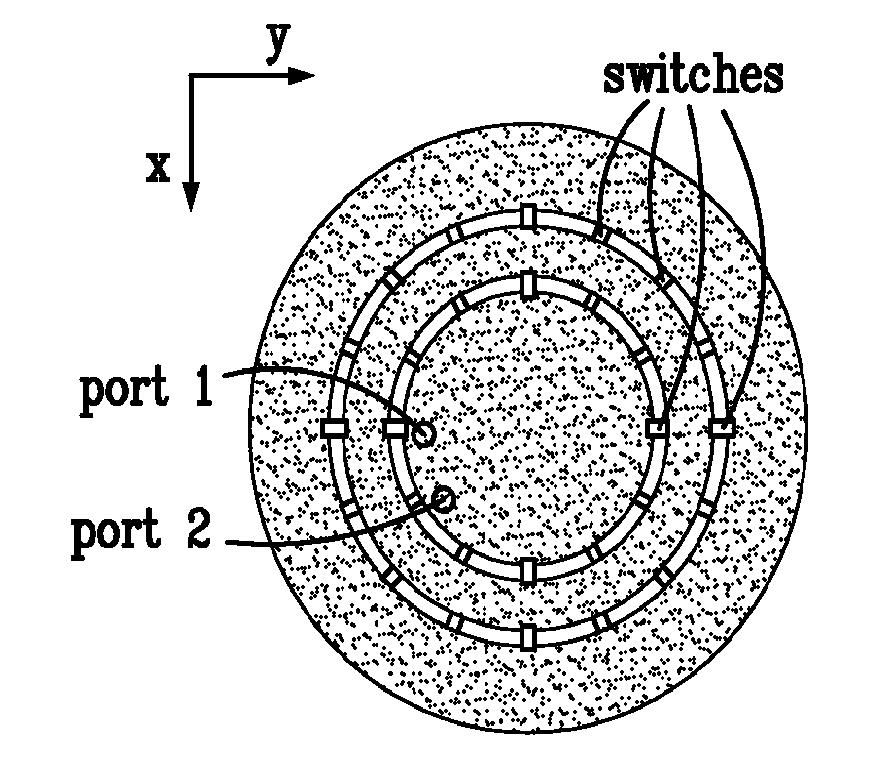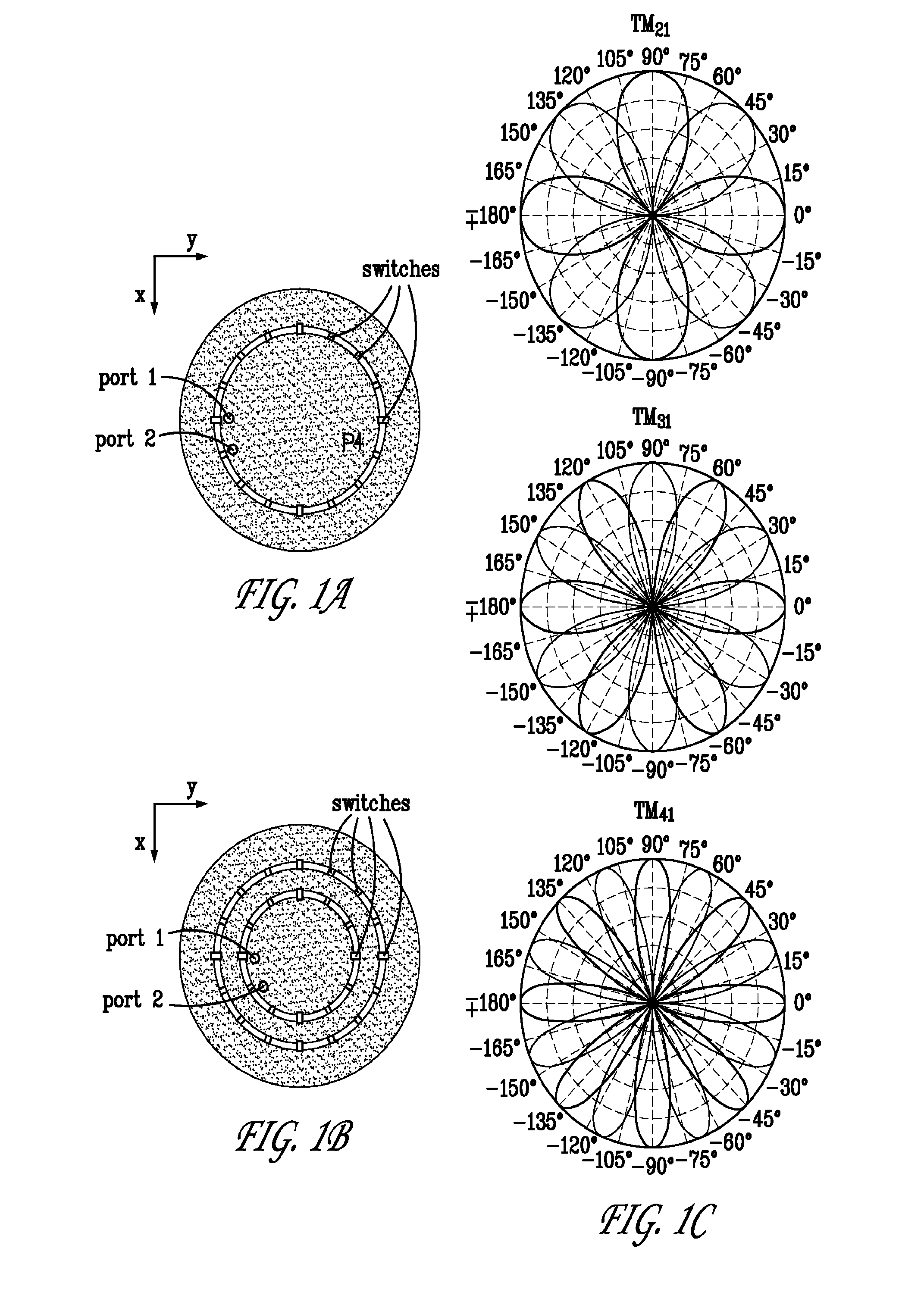Systems and methods for selecting reconfigurable antennas in MIMO systems
a technology of reconfigurable antennas and antennas, applied in the direction of resonant antennas, line-transmission details, transmission monitoring, etc., can solve the problems of affecting the performance of reconfigurable mimo, so as to achieve the effect of increasing the performance of communication systems and channel estimation
- Summary
- Abstract
- Description
- Claims
- Application Information
AI Technical Summary
Benefits of technology
Problems solved by technology
Method used
Image
Examples
Embodiment Construction
[0029]SIMO and MISO systems employ multi element antennas only at the receiver and at the transmitter respectively, while MIMO systems employ multi element antennas at both ends of the communication link. In the following description, a MIMO communication system is considered as an exemplary embodiment, but those skilled in the art will also appreciate that all the results apply also to SIMO and MISO systems.
[0030]Unlike conventional non-reconfigurable multi-element antenna systems, in a reconfigurable MIMO system, each antenna element of the transmitting / receiving array is capable of changing its radiation pattern characteristics (i.e. pattern, polarization or both). Changing the radiation properties of each antenna element has been shown to be an effective technique to adapt to the changing conditions of the wireless channel in between the transmitter and the receiver. By properly selecting the array configurations, it is possible to choose the channel scenario that allows for the...
PUM
 Login to View More
Login to View More Abstract
Description
Claims
Application Information
 Login to View More
Login to View More - R&D
- Intellectual Property
- Life Sciences
- Materials
- Tech Scout
- Unparalleled Data Quality
- Higher Quality Content
- 60% Fewer Hallucinations
Browse by: Latest US Patents, China's latest patents, Technical Efficacy Thesaurus, Application Domain, Technology Topic, Popular Technical Reports.
© 2025 PatSnap. All rights reserved.Legal|Privacy policy|Modern Slavery Act Transparency Statement|Sitemap|About US| Contact US: help@patsnap.com



